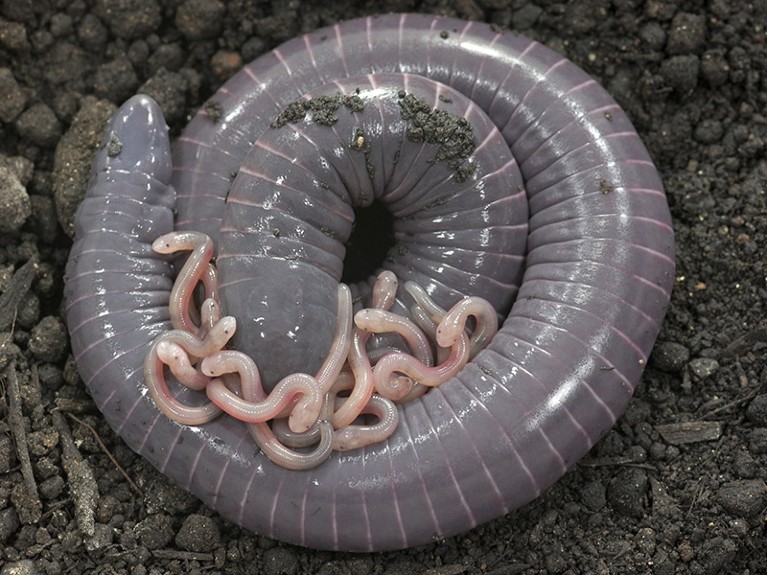[ad_1]

The worm-like caecilian Siphonops annulatus is the first amphibian described to produce ‘milk’ for offspring hatched outside its body.Credit: Carlos Jared
An egg-laying amphibian found in Brazil nourishes its newly hatched young with a fatty, milk-like substance, according to a study published today in Science1.
Lactation is considered a key characteristic of mammals. But a handful of other animals — including birds, fish, insects and even spiders — can produce nutrient-rich liquid for their offspring.
That list also includes caecilians, a group of around 200 limbless, worm-like amphibian species found in tropical regions, most of which live underground and are functionally blind. Around 20 species are known to feed unborn offspring — hatched inside the reproductive system — a type of milk. But the Science study is the first time scientists have described an egg-laying amphibian doing this for offspring hatched outside its body.
The liquid is “functionally similar” to mammalian milk, says study co-author Carlos Jared, a naturalist at the Butantan Institute in São Paulo, Brazil.
An unusual diet
In the 2000s, researchers showed that in some caecilians, the young hatched with teeth and that they fed on a nutrient-rich layer of their mother’s skin2 around every seven days. “It sounded a little strange — babies eating just once a week,” says Marta Antoniazzi, a naturalist also at the Butantan Institute. “That wouldn’t be sufficient for the babies to develop as they do.”
Antoniazzi, Jared and their colleagues wanted to investigate these young amphibians’ bizarre feeding habits in more detail, so they collected 16 nesting caecilians of the species Siphonops annulatus and their young at cacao plantations in the Atlantic Forest in Brazil. The researchers then filmed the animals and analysed more than 200 hours of their behaviour.
The footage revealed that as well as munching on their mother’s skin, S. annulatus young could get their mother to eject a fat- and carbohydrate-rich liquid from her cloaca — the combined rear opening for the reproductive and digestive systems — by making high-pitched clicking noises. The young would also stick their heads into the cloaca to feed.
The finding that S. annulatus is “both a skin feeder and now a milk producer is pretty amazing”, says Marvalee Wake, an evolutionary biologist at the University of California, Berkeley. It is probably just one of the caecilians’ many biological quirks. “Most species have not been studied at this level of detail,” says Wake. “So, who knows what else they’re doing.”
[ad_2]
Source Article Link

